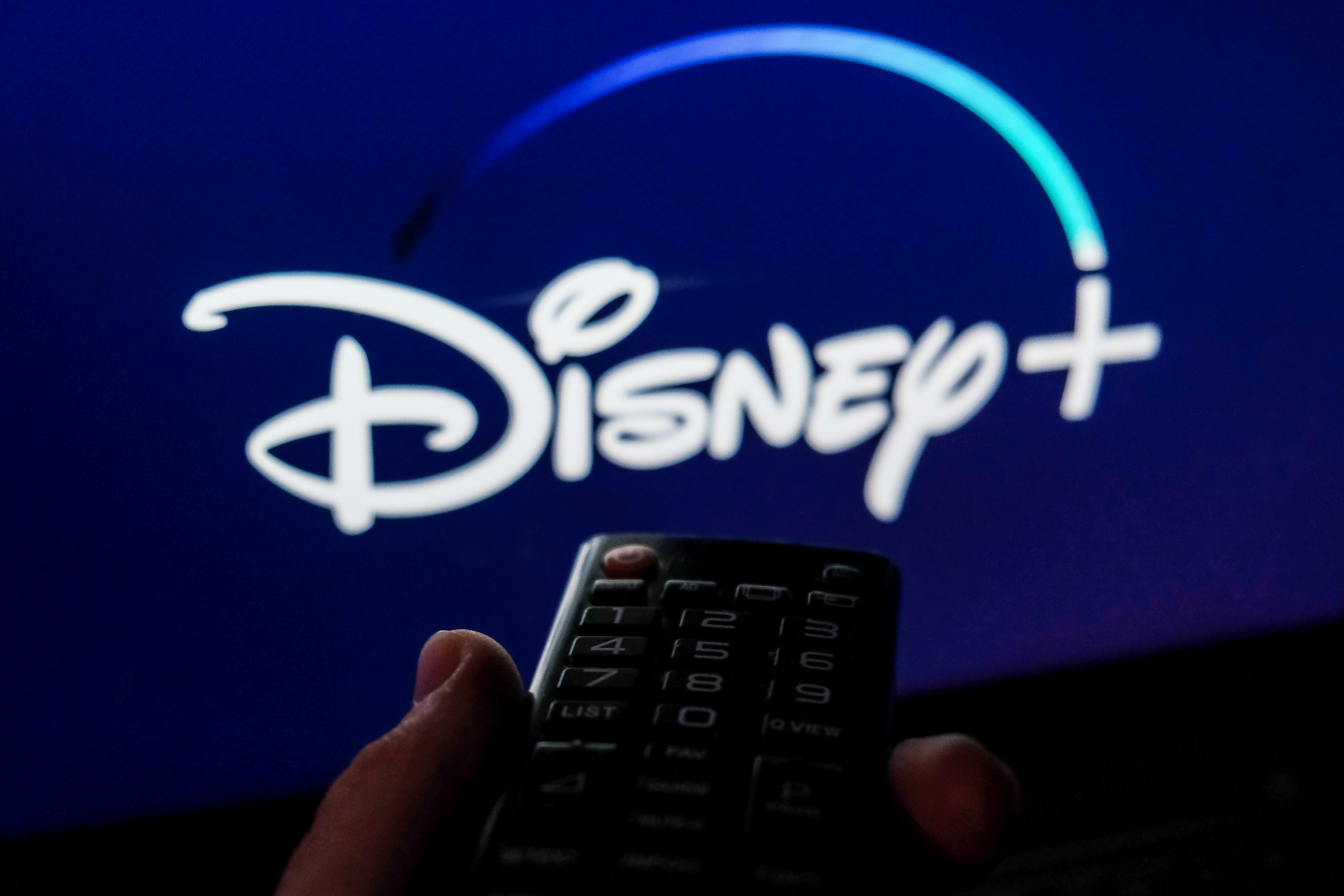Disney Streaming Subscribers Rise 14.6 Million to 235 Million
4th quarter earnings rise despite growing direct-to-consumer red ink

The Walt Disney Co. added 14.6 million subscriptions in the fourth quarter, giving it a global total of over 235 million, staying ahead of Netflix, which last month reported having 223 million subscribers worldwide.
The company added 12.1 million Disney Plus subscribers.
Disney’s direct-to-consumer losses widened to $1.474 billion from $630 million a year ago, but overall earnings were up and CEO Bob Chapek said he expected DTC losses to begin to narrow and Disney Plus to turn profitable in fiscal 2024.
Disney’s streaming strategy was based on big spending on content, low-priced products and a willingness to take short-term losses to build what Chapek called “the world’s most powerful suite of streaming services,” reaching millions of viewers with must-see content.
Now the focus turns to making money.

“Our financial results this quarter represent a turning point as we reach peak DTC operating losses which we expect to decline going forward,” Chapek said on Disney’s earnings call with analysts.
Wall Street has shifted its focus from measuring streaming services by subscriber growth at all costs to demanding profitability and increasing revenue per subscriber.
Broadcasting & Cable Newsletter
The smarter way to stay on top of broadcasting and cable industry. Sign up below
Chapek said Disney’s streaming financial health will improve with price increases and the launch of an ad-supported Disney Plus tier next month.
“We believe we are on a path to a profitable streaming business that generates shareholder value long into the future,” Chapek said.
Disney's earnings and revenue were below Wall Street estimates and Disney shares dropped 6% in after-hours trading.
At the end of the fourth quarter, Disney Plus had 164.2 million subscribers, up from 152.1 million last quarter and up 39% from a year ago.
Domestic Disney Plus subscribers rose to 46.4 million from 44.5 million last quarter and up 20% from a year ago.
ESPN Plus had 24.3 million subscribers, up from 22.8 million last quarter and up 42% from a year ago.
Hulu had 47.2 million subscribers, up from 46.2 million subscribers last quarter and up 8% from a year ago. It had 42.8 million SVOD-only subscribers, up from 42.2 million last quarter and up 8% from a year ago. Hulu Plus Live TV had 4.4 million subscribers, up 400,000 from last quarter and up 10% from a year ago.
The Disney bundle accounts for more than 40% of the company's DTC subscribers.
Disney chief financial officer Christine McCarthy said the company expected ESPN Plus and Hulu to continue to add new subscribers in the first quarter, but Disney Plus sub growth will slow because of comparisons to Disney Plus Day promotions in the fourth quarter.
Content spending for 2022 was $30 billion and the company expects it to be in the low $30 billion range for fiscal 2023, McCarthy said.
Average revenue per subscriber at the streaming services were down because of the strong dollar, fewer pay-per-view events and lower Hulu ad revenue.
ARPU will rise modestly in Q1 as price increases take hold, but will be felt more strongly in Q2, McCarthy said. The company doesn’t expect ARPU to benefit from the launch of the Disney Plus ad tier until later in fiscal 2023.
Disney’s fourth-quarter net income edged up to $162 million, or 9 cents a share, up from $159 million, or 9 cents a share, a year ago. Operating income from Disney's theme parks jumped to $1.5 billion from $640 million a year ago as revenue rose 36% to $7.4 billion.
Overall Disney revenues rose 9% to $20.2 billion.
Disney’s Media and Entertainment Distribution unit had operating income of $1.6 billion, up 1% from last year, despite a 3% drop in revenues to $12.7 billion.
Disney’s linear network had operating income of $1.7 billion, up 6% despite a 5% drop in revenue to $6.3 billion.
CFO McCarthy said the linear network gains were driven by lower programming costs — the NBA Finals were in Q3 this year and the company aired fewer Major League Baseball games but one more National Football League contest — offset by lower advertising revenue.
ESPN ad revenue was down 23% in the fourth quarter. It was down only 2%, adjusting for the NBA Finals, McCarthy said.
So far in the first quarter, ESPN ad sales are pacing down because there will be two fewer college football playoff games in the quarter.
"Assuming we do not see a meaningful shift in the macroeconomic climate, we currently expect total company fiscal 2023 revenue and segment operating income, to both grow at a high single-digit percentage rate, versus fiscal 2022,” McCarthy said.
“2022 was a strong year for Disney, with some of our best storytelling yet, record results at our Parks, Experiences and Products segment, and outstanding subscriber growth at our direct-to-consumer services, which added nearly 57 million subscriptions this year for a total of more than 235 million,” Chapek said in recapping the results.
“Our fourth quarter saw strong subscription growth with the addition of 14.6 million total subscriptions, including 12.1 million Disney Plus subscribers,” Chapek said. “The rapid growth of Disney Plus in just three years since launch is a direct result of our strategic decision to invest heavily in creating incredible content and rolling out the service internationally, and we expect our DTC operating losses to narrow going forward and that Disney Plus will still achieve profitability in fiscal 2024, assuming we do not see a meaningful shift in the economic climate.
“By realigning our costs and realizing the benefits of price increases and our Disney Plus ad-supported tier coming December 8, we believe we will be on the path to achieve a profitable streaming business that will drive continued growth and generate shareholder value long into the future,” he said. ■
Jon has been business editor of Broadcasting+Cable since 2010. He focuses on revenue-generating activities, including advertising and distribution, as well as executive intrigue and merger and acquisition activity. Just about any story is fair game, if a dollar sign can make its way into the article. Before B+C, Jon covered the industry for TVWeek, Cable World, Electronic Media, Advertising Age and The New York Post. A native New Yorker, Jon is hiding in plain sight in the suburbs of Chicago.

